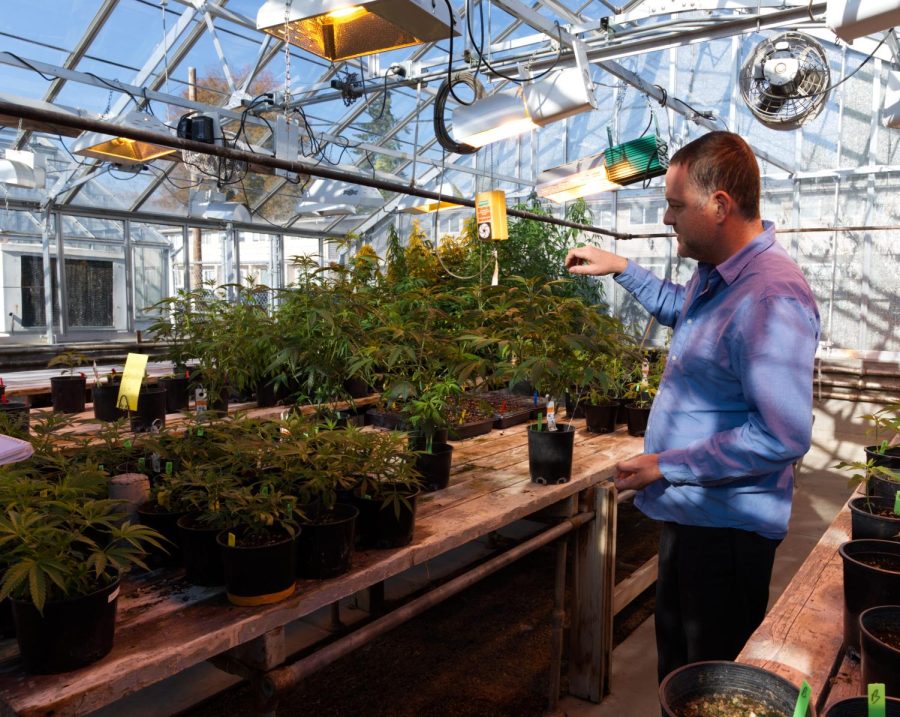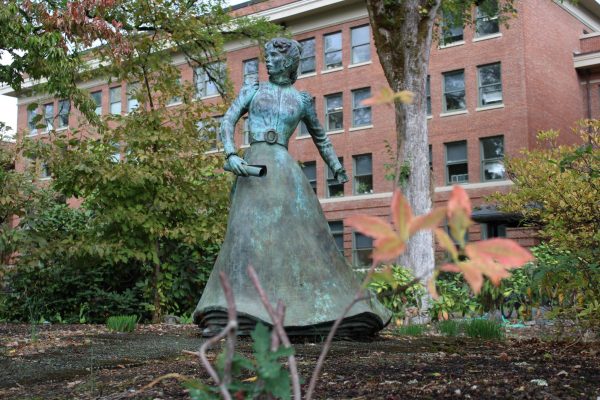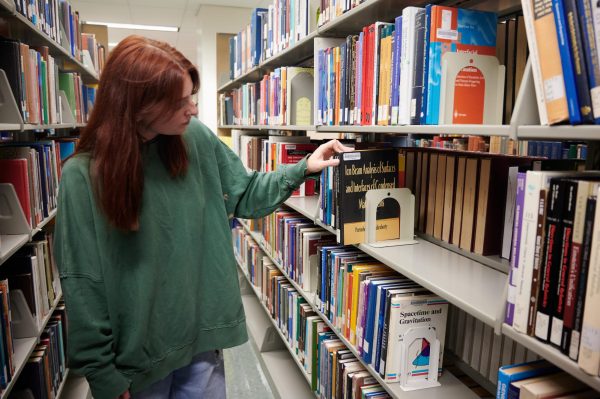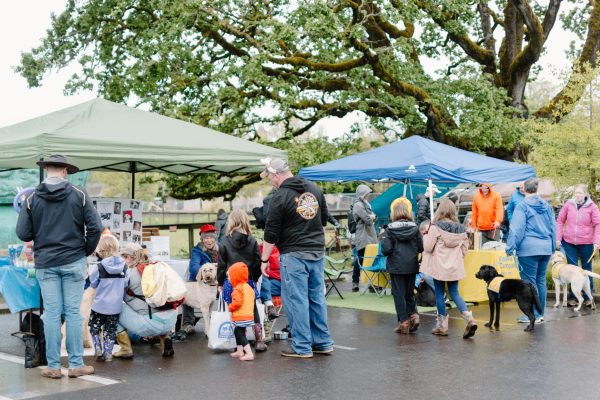Exploring OSU’s hemp greenhouses with Professor Stephen Baluch
Stephan Baluch explains the process of maintaining and diversifying the Oregon State research greenhouse hemp stock on Nove. 21. He grows many breeds of hemp with specializations for fiber, feed, and medicinal properties.
January 27, 2023
“It’s a crazy crop, I never thought I’d ever be working in it, really,” said Stephen Baluch, a newly recruited assistant professor for Oregon State’s College of Agricultural Sciences.
Baluch specializes in hemp breeding within the Department of Crop and Soil Science, where his research “focuses on the development of fiber, grain and to a lesser extent, oil hemp varieties.”
Prior to working for the university, Baluch worked in the private industry, gaining experience with breeding corn and breeding recreational cannabis. His last position before joining the university faculty was director of breeding at Arcadia Biosciences, a national agricultural biotechnology company. This is where Baluch began breeding hemp.
He brings this experience to his research at Oregon State, where he often finds himself in the greenhouses. Baluch gave Beaver’s Digest the opportunity to tour these greenhouses and see where his hemp research actually takes place.
As we entered the first greenhouse, Baluch explained one of the projects he is working on.
“So hemp in general has been bred for temperate latitude,” Baluch said. “When you take it out of that range—you take it, say, below the 35th parallel, so that’d be like south of San Francisco—and when you do that, the plants will flower a lot sooner than they would here. And so you don’t get as much biomass accumulation and flower accumulation.”
Addressing this “maturity problem” with hemp is one of Baluch’s research focuses. His goal is to adapt a hemp line through cross-breeding which will have increased biomass in southern regions. He plans to do this “through the initiation of flowering.”
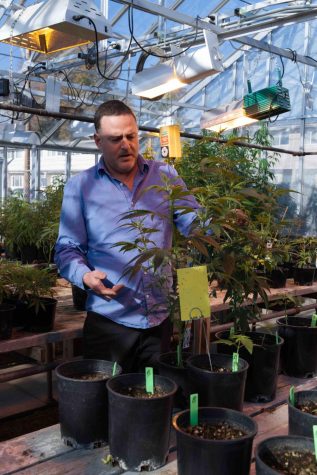
The first greenhouse we visited had smaller hemp plants for this purpose, plants that were in their initial flowering stages. Baluch analyzes the flowering times of these plants.
“So if they flower early versus when they flower late, we’ll just have a good continuum and we will do the pollination that way,” he said.
Baluch gestured towards one table of plants, and explained, “these will start initiating flower and flower longer, hopefully, than their northern counterparts.”
As we walked between greenhouses, Baluch discussed the constant progress being made within hemp research.
“People are publishing new work all the time,” he said, and mentioned a new academic paper he read, in which researchers identified an auto-flowering gene, a discovery which could help breeders save time in choosing plants.
The second greenhouse we walked through had much larger hemp plants, with each table designated to its own project. Baluch went over some of the different varieties of hemp in the room which he and his collaborators were working on. He pointed out the fiber and grain varieties of hemp, as well as hemp being grown for CBD specifically. There were even some hemp plants which were exclusively grown for cloning purposes.
Baluch noted that the two greenhouses we visited are actually for wheat, currently also being used for hemp research. He mentioned that there are plans for a new addition, so the hemp program will soon have its own greenhouse as well.


